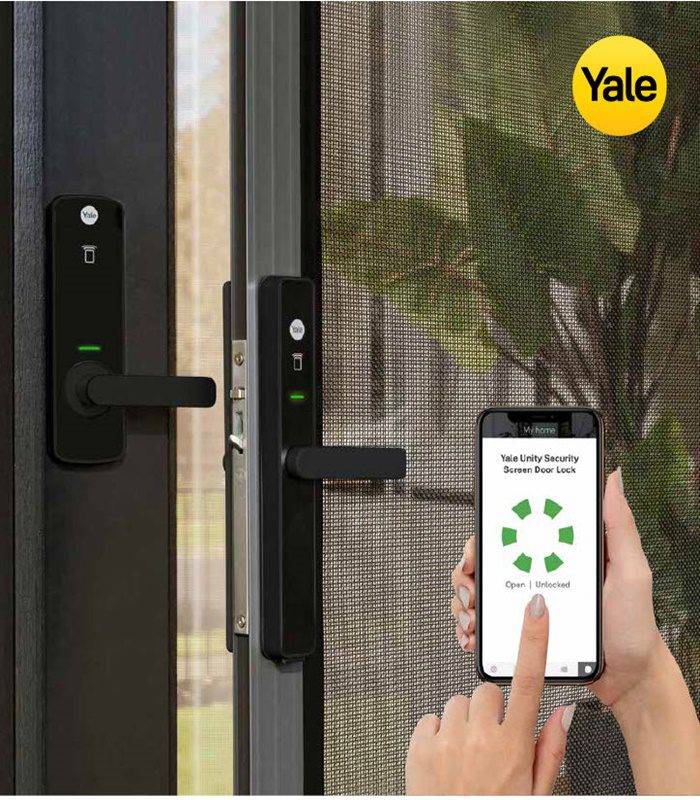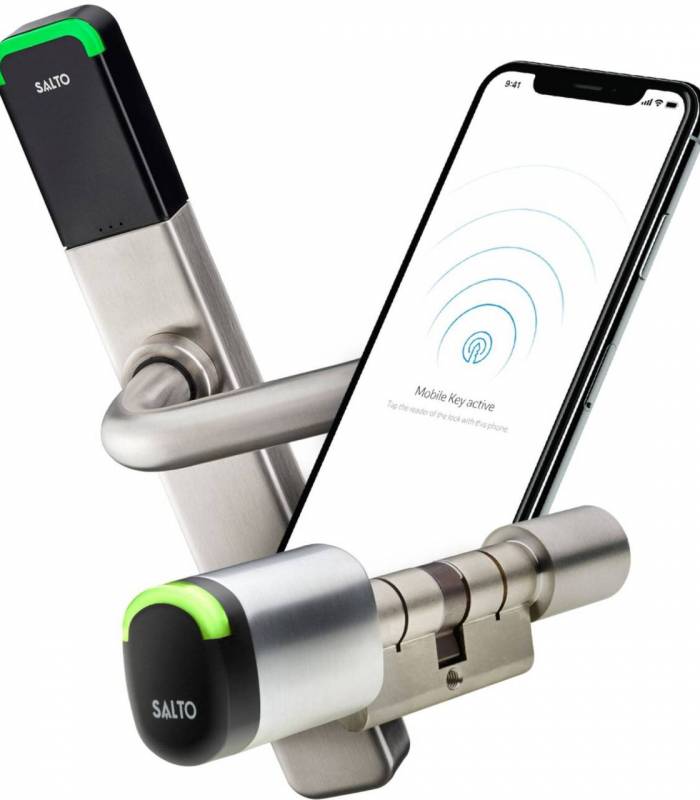Keyless Entry Systems
Keyless access control systems are available for all domestic and business sectors.

Overview
AJ Edden are Newcastle’s leading supplier and installer of keyless entry systems for your home or business. As a leading provider of cutting-edge security solutions, we understand the importance of efficient and secure access control.
Benfits of Keyless Entry
- Enhanced Security: Traditional key-based locks are susceptible to various security vulnerabilities, such as unauthorized key duplication and physical lock picking. A keyless entry system eliminates these risks by employing advanced encryption and authentication techniques. With features like PIN codes, biometric scanners, or smart cards, you can ensure that only authorized individuals can access your premises.
- Convenience and Ease of Use: Say goodbye to the hassle of carrying multiple keys or fumbling with locks. A keyless entry system provides a streamlined and user-friendly experience. Whether it’s a numeric code, fingerprint, or proximity card, gaining access becomes as simple as a touch or a swipe. This convenience is particularly beneficial for businesses with a high volume of employees or homeowners who frequently have guests.
- Increased Flexibility: Unlike traditional locks that require physical keys, keyless entry systems offer greater flexibility in granting access to specific individuals or groups. With programmable features, you can easily assign temporary codes or revoke permissions when needed. This flexibility is invaluable for businesses that need to manage access for employees, contractors, or vendors, or for homeowners who want to grant entry to service providers or guests.
- Remote Access Control: One of the significant advantages of keyless entry systems is the ability to control and monitor access remotely. Modern systems can be integrated with smartphones or computers, enabling you to grant access to authorized individuals even when you’re not physically present. You can also receive real-time notifications about entry attempts or security alerts, keeping you informed and in control at all times.
- Durability and Reliability: Keyless entry systems are designed to be robust and durable, offering long-lasting performance. Unlike traditional keys that can wear out or break, electronic access methods are less prone to physical damage. Moreover, many keyless entry systems feature backup power options, ensuring that your access control remains functional even during power outages or emergencies.
- Aesthetics and Modern Appeal: In addition to the practical benefits, keyless entry systems can enhance the aesthetic appeal of your property. Sleek and modern in design, these systems seamlessly blend into your home or business’s architecture. Implementing a keyless entry system showcases your commitment to advanced technology and creates a positive impression on visitors and clients.
- Detailed Access Logs: Keyless entry systems often come equipped with advanced tracking and reporting capabilities. These systems can provide detailed logs of who accessed your property and at what time. This information can be useful for security audits, monitoring employee attendance, or investigating any security breaches. Access logs also offer peace of mind by allowing you to keep track of who is coming and going from your premises.

Why Choose AJ Edden
Excellent Customer Service
AJ Edden is committed to providing exceptional customer service. They have a team of friendly and knowledgeable staff who are always available to assist their customers. They provide timely responses to customer inquiries, and their technicians arrive promptly for installations or repairs
Competitive Pricing
AJ Edden offers competitive pricing for their intercom security services. They provide transparent quotes with no hidden fees, & they offer affordable solutions that meet their customers’ budgets. Contact us today to find out how they can provide you with a reliable & effective intercom security solution for your property.
Custom Products
We have access to an extensive range of custom and made-to-order products
Door-By-Door Packing
Simplify the installation process with door-by-door packing process.
Variation Tracking
Changes happen on projects - our team are ready to assist with fast turn-arounds.
Installation Support
Our product experts can assist your installers to get the job done right.
Alarm Systems
We have access to an extensive range of current technology products for residential and commercial
CCTV
Current Market technology available for you home or business to help secure your premises.

Commercial Door Hardware
Secure your business with our range of leading architectural door hardware products and services including master key systems, digital key systems and access control technologies
Residential Door Hardware
Quality designer door hardware and associated products to make your home secure. Visit our showroom today

Strata
Managed restricted key systems, CCTV, Access Control, Intercoms and Alarms. We are your one stop shop for all your locksmith and electronic security needs.
Safes
Do your best to prevent your valuables and documents from fire and theft
Security Doors
Secure your premises with one of the 3 point locking security doors. Visit our showroom to view the range
Locksmith
Secure your most valuable assets with our range of top quality locks. Key all your locks to a single key, secure your doors windows and sheds.We can install and service your selection
